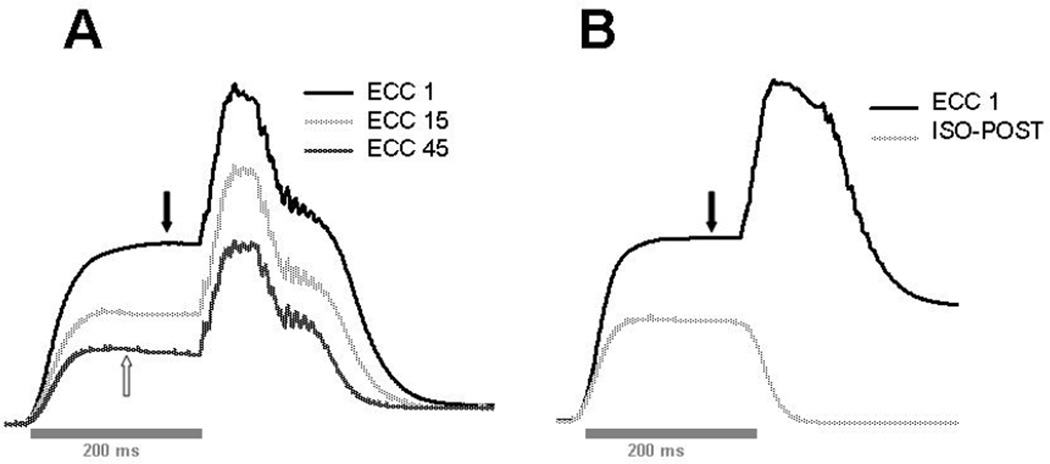Figure 2.
Representative trace recordings of torque from the lengthening contractions. For both single and multiple repetitions, muscles were stimulated for 200 ms to induce a peak isometric contraction prior to lengthening by the foot plate. Maximal isometric torque (without lengthening) was measured before injury (not shown, but equal to the plateau of the isometric portion of the trace recordings, indicated by filled arrows). A: superimposed recordings from the multiple repetition protocol (a 60° arc of motion) showing the first (ECC 1), middle (ECC 15), and last (ECC 45) eccentric contractions. Note that even with injury, the eccentric torque is still relatively high compared to isometric torque (the peak isometric torque measured after injury is not shown, but is similar to the isometric portion of the last trace recording, indicated by open arrow) B: superimposed recordings of the single repetition protocol (ECC 1, a 90° arc of motion) and the isometric contraction to measure torque loss after injury (ISO-POST).

